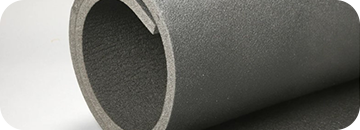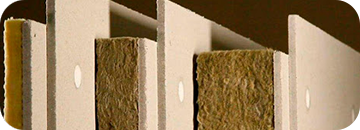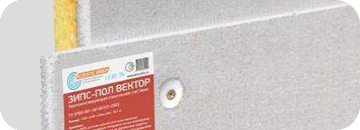In order to properly choose an effective material for soundproofing a floor, you need to understand — what is "soundproofing the floor" and what kinds of noise are.
Thus, the noises are different — air, shock and structural.
Airborne noise is the noise which spreads through the air. It's loud talking, shouting, noise or siren sounds on the street that you hear outside the window of your apartment, etc.
Structural noise is noise that arises at mechanical influence of subjects with walls or floors of the building. Is essentially vibration communications in buildings. It can be the noise of flushing water in the pipes, the sounds in the air ducts, the Elevator and the well-known method to annoy the neighbor knocks on the battery.
Impact noise is any impact that is perceived by a structural element of the building, is transferred into the room and has a very wide range of distribution. Her heels on the tile on the floor, the nail in the wall or floor — a source of impact noise. Impact noise is a type of structural noise. Relates solely to insulation of floor structures.
.png) Only ceiling in modern construction, at the same time are characterized by two different, not related to each other parameters: insulation airborne noise (from the voice) and the insulation of impact noise (footsteps and movement of furniture). When selecting materials, you need to understand what noise you want to isolate themselves, as some materials are only the decrease in the index of impact noise, and are not effective against air. While others can cope with air and shock noise.
Only ceiling in modern construction, at the same time are characterized by two different, not related to each other parameters: insulation airborne noise (from the voice) and the insulation of impact noise (footsteps and movement of furniture). When selecting materials, you need to understand what noise you want to isolate themselves, as some materials are only the decrease in the index of impact noise, and are not effective against air. While others can cope with air and shock noise.
Soundproofing under the floor means the insulation of impact noise, i.e. noise that is transmitted by steps, movement of furniture, hitting the floor through the floor slab between the floors to our apartment. Why are we hearing the footsteps of upstairs neighbors? The main reason is the lack of sound-proofing material in the construction of ties in our homes.
Principle of sound insulation, and a simple arrangement of so-called "floating floor" or "floating screed". Here an engineering approach "mass-spring-mass", i.e., "tie — elastic material floor slab".
The only question is to clarify — what is the recommended screed and what effective modern materials can be used for its arrangement.
Screed is one of the structural elements, the correct creation of which is required if we want to obtain strong and durable flooring. To the two main objectives of ties include leveling and load distribution. In the first case, a specific value, what is the thickness of floor screeds will be done depends on the existing configuration and floor of the room, the geometry and elevation. The second task is to ensure the distribution of load depends on strength of the layer.
Norms, what thickness should be screed — does not exist. There is an exact requirement technical performance: coating shall withstand 15 MPa in compression and have a slope not more than 0.2%. Other challenges several specific character is the improvement in thermal and acoustic insulation. And here, too, there are clear rules. Insulation of impact noise is clearly regulated in DBN — less than 55 dB. Own level of impact noise insulation concrete slab (160-200 mm) ~ 75 dB. So obviously some kind of design using the appropriate materials should provide an indicator more than 20 dB.
In this article I want to consider different options for high-performance materials that will help to provide this figure:
— materials with optimum dynamic modulus of elasticity, such as chemically cross linked PE foam XPE SanpolFoam and acoustic boards Akufloor S-20, manufactured by special technology of optical fiber;
— sound insulation sandwich panel, such as ZIPS-POL Vector and ZIPS-FLOOR Module.
 Chemically cross linked polyethylene foam SanpolFoam — at the moment the best polymeric materials for acoustic insulation of floor screed on a ratio the price/quality:
Chemically cross linked polyethylene foam SanpolFoam — at the moment the best polymeric materials for acoustic insulation of floor screed on a ratio the price/quality:
- Thanks to the closed cellular structure, has minimal shrinkage.
- Simple and convenient installation.
- Provides reliable sound insulation of the premises with a minimum thickness, which is confirmed by the protocols of the acoustic tests.
- Firmly locks cement screed, preventing the destruction and formation of microcracks.
- A versatile material.
In addition to the device of the screed is widely used as:
- underlay under parquet and laminate;
- thermal insulation of heating systems (Underfloor heating), water supply, ventilation and conditioning;
- heat - and waterproofing layer of foundations and floors above the basement;
- soundproofing cars.
Acoustic tests gave the following figures:
At a thickness of 5 mm loss index impact noise 28 dB ⇒ leaf price XPE about 5 mm — 34.00 UAH/m2
8 mm loss index impact noise 30 dB ⇒ leaf Price XPE 8 mm 56.00 UAH/m2
10 mm loss index impact noise 31 dB ⇒ leaf Price XPE 10 mm — 70.00 UAH/m2
Because of its thickness, efficiency, ease of installation, price SanpolFoam gaining a leading position on the market. Put on more than 20 LCD Kiev.
Acoustic wool Akufloor S-20 — best stuff among Wat on the market for ties. It has optimum density 90 kg/m3 for such problems, and easy to work with.
It is made from staple fiber — that is, from long fiberglass strands.
So, it is perfectly retains its shape when the deformation and minimal emission of fibres. None of the basalt mineral wool has similar properties.
Basalt wool is composed of glued together fibers and therefore the deformations (stopani, the crushing etc) permanently losing its original shape, which is very important for the efficient arrangement of the screed.
Standard screed thickness of 50-70 mm and weighs 120 kg/m2.
We emphasize that the load from the ties is evenly distributed in material, the shrinkage of the material under the screed Akufloor is 15-20% — that is, 3-4 mm
At a thickness of 20 mm provide 36 dB of sound insulation in the design of the screed.
Price 119.00 UAH/m2
 Soundproof sandwich panel ZIPS-GENDER - team of the insulating panel system. Effective solution to the problem of additional sound insulation of intermediate floors. With it completely solved the problem of sound insulation and in contrast to chemically cross-linked polyethylene foam SanpolFoam and acoustic wool Akufloor, at the same time increasing the isolation of airborne noise — talking, dogs barking, a siren, radio equipment, etc.
Soundproof sandwich panel ZIPS-GENDER - team of the insulating panel system. Effective solution to the problem of additional sound insulation of intermediate floors. With it completely solved the problem of sound insulation and in contrast to chemically cross-linked polyethylene foam SanpolFoam and acoustic wool Akufloor, at the same time increasing the isolation of airborne noise — talking, dogs barking, a siren, radio equipment, etc.
ZIPS-FLOOR is a two-layer panel consisting of layers of staple fiber, gypsum fiber Board sheets and vibration insulating supports are made of polyurethane Sylomer used to eliminate the hard connection with the roof. Over the panels are fixed sheets of gypsum fiber Board with a total thickness of 20 mm and a finishing layer of plywood 18 mm thick, bonded in a special flexible sealant.
 Private panels thickness ZIPS-FLOOR Vector is 45 mm. Thickness with a finishing layer of plywood — 83 mm.
Private panels thickness ZIPS-FLOOR Vector is 45 mm. Thickness with a finishing layer of plywood — 83 mm.
Index reduction of impact noise level of 32 dB.
Additional index of airborne sound insulation of 6 dB to 8 dB
Weight: 18.5 kg
Private panels thickness ZIPS-FLOOR Module is 75 mm. Thickness with a finishing layer of plywood — 119 mm.
Index reduction of impact noise level of 38 dB.
Additional index of airborne sound insulation 7 — 9 dB
Weight: 19
A big disadvantage of the panels, the heavy weight, thickness and price.
Price 1335.00 UAH/m2
In this article, we have shown the main advantages in choosing a material. Well, the only choice for You
